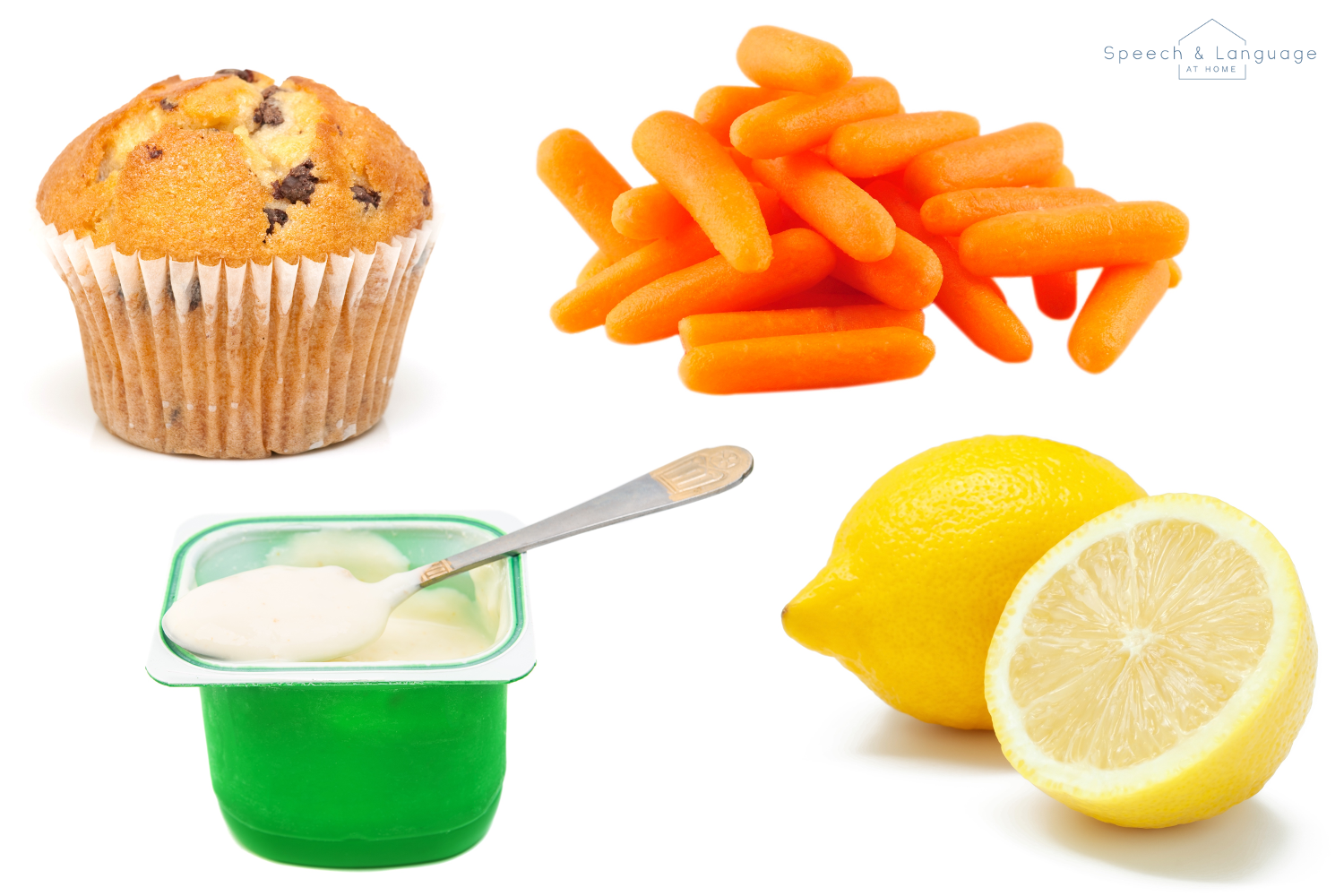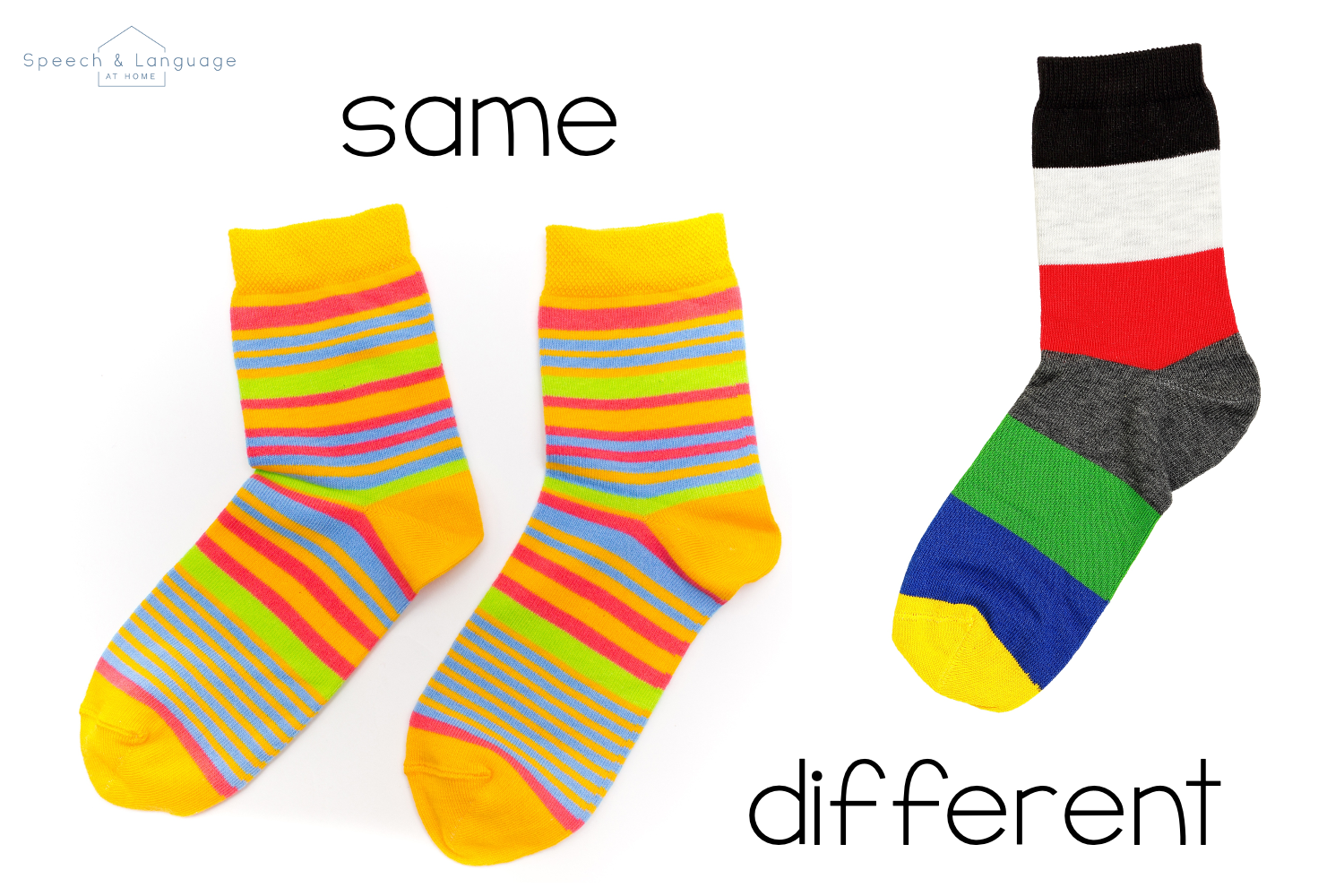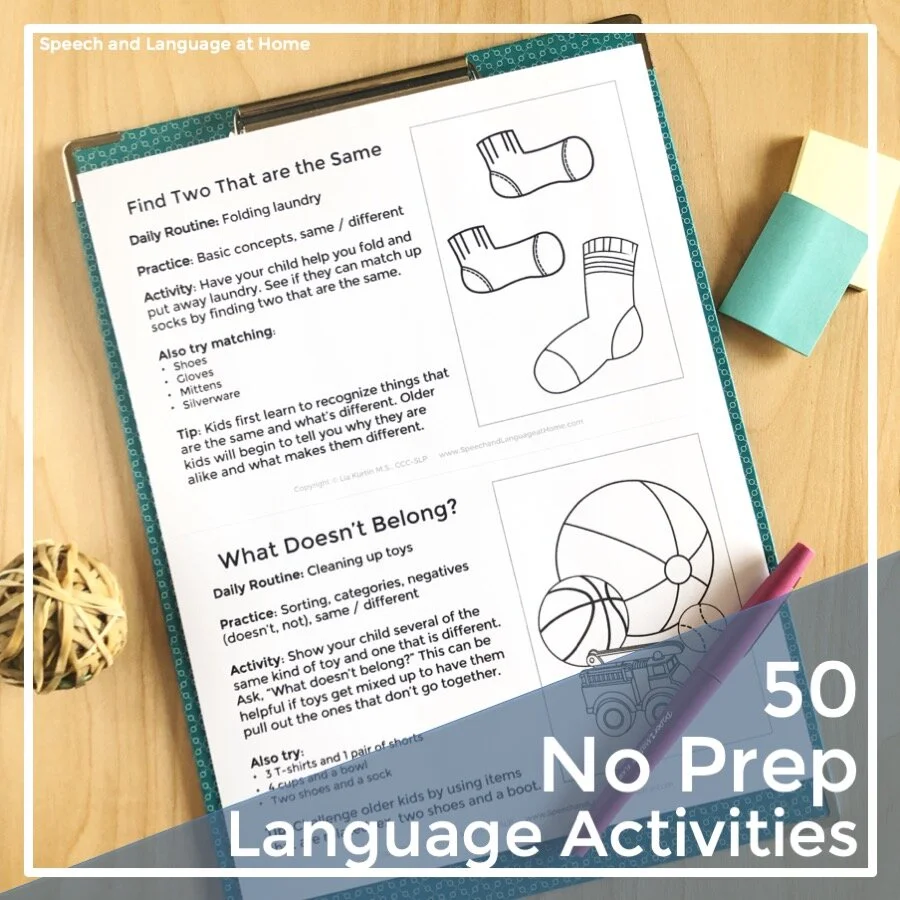How to Teach Language to Your Preschooler at Home
Today I'm sharing several no-prep, no-fuss activities to teach language to your preschooler in the context of daily routines.
I know you’re busy. Especially now.
You’re working from home and schooling from home.
And making meals and paying bills.
You’re running your 7th load of laundry in as many days. While it processes, you sweep the kitchen floor because your little one pushed his bowl of cheerios off the breakfast table. Again.
There’s a virtual preschool curriculum night that coincides perfectly with the 4-year-old’s bedtime and the infant’s witching hour. By the time you sit down to join the zoom call, you’re exhausted.
And then, as you listen to the teacher, you feel increasingly burdened with guilt.
Your preschooler is behind. He’s not talking much, and you can’t understand him when he does. It’s hard to tell how much he understands, and he gets frustrated constantly by the failures in communication.
You sit there, puzzling as to how you might carve out extra time each day to sit down and help your child practice language skills. You’d need a 25th hour in the day just to prepare a lesson –– let alone teach it –– and you don’t see that happening any time soon.
When you scour the internet for fancy therapy games and flashcards to teach language, you’re forced to consider a second mortgage on your house. There’s that iPad app your friend recommended, but the daily screen time tally is already too painful to bear.
What gives?
But wait. What if I told you that targeting language development at home didn’t have to be this hard?
It doesn’t have to be this hard.
There’s a buzzword in the speech therapy world: naturalistic. Research tells us that intervention, and especially intervention for preschoolers, should focus on natural settings. (1)
Routine tasks. Comfortable places. Familiar people.
We want children to be developing skills in the context of their daily lives so that they will generalize the skills more readily. (2)
So what does this mean for you?
It means you can forget about the shiny new $50 toy that claims to build sentences for your preschooler. You can forget about the hour-long language materials prep period you penciled into your calendar. And, while you’re at it, you can forget about sitting your child down at the table for “practice.”
I’ve got a better solution.
Build language practice into daily routines. Not just because it’s easier. But because it’s actually preferable for your child’s development and learning.
Four No-Fuss, No-Prep Activities to Teach Language to Your Preschooler at Home
The natural opportunities for teaching language are endless, but sometimes it’s hard to know where to start.
I’ve got you covered!
And, after you’ve worked your way through these four activities, try Speech and Language at Home’s Preschool Parent Handout, No-Prep Speech Therapy Activities, for more!
Adjectives While Eating
Does it feel like mealtimes are a rushed interlude between important daily tasks? Try considering mealtime the important task! Not just for nutrition but for the therapeutic preschool-perfect opportunities it offers. Teach language while everyone is happily eating.
Try this: If your child is starting to say words, focus on descriptive words over the course of your meal. The variety of flavors, scents, textures, and colors in foods makes them fun to describe. To start, try: crunchy, soft, slimy, chewy, sweet, sour, spicy, yummy, and yucky! This will give your preschooler’s adjective repertoire a boost.
If your preschooler is not yet saying any words, try working on basic communication skills such as imitation of sounds, facial expressions, or actions. For example, you might rub or pat your stomach or say “mmmm” while you and your child are eating a cupcake. You might make a disgusted face or stick out your tongue when tasting a lemon.
Laundry Basket Basic Concepts
The laundry loads seem endless some days, right? Fortunately, you can make this task dual-purpose: get clean clothes and teach language to your preschooler.
Try this: Work on basic concepts such as same and different while matching socks. Hold up two non-matching socks and ask, “Same?” Repeat this a couple of times before holding up a matching pair. Size (e.g., big and little) is another basic preschool-appropriate concept that fits seamlessly into a laundry task.
If your child is unfamiliar with the basic concepts you’re targeting, make him successful by providing lots of cues. For example, shake your head “no” in an exaggerated manner when you ask “Same?” and model a verbal response: “They’re different.” Nod enthusiastically when you find a matching pair.
Counting and Quantity in Clean-up
At the completion of an activity or at the day’s end, make the mundane task of cleaning up fun and educational. Teach language in the midst of mess!
Try this: Count toys as you put them into the appropriate box or basket. Then state the final number, and emphasize the plural form (e.g., “Ten racecars!”). You can also teach quantity concepts such as more and less. For example, if you’re cleaning up red and yellow Legos, you might make a comment about having more red Legos than yellow ones.
If your child isn’t grasping numbers, start small and provide more structure! Put three teddy bears in front of him and help him count to three while pointing to each. You can even guide his hands physically to each. Then, say “Three!” and put them away.
Mailbox Prepositions
Make your daily trip to the mailbox a learning experience for your preschooler! Kids find it fun, and it’s the perfect opportunity to practice and teach concepts!
Try this: Target spatial concepts and prepositions such as in(side), out(side), up, and on. Go to the mailbox and say, “What’s in the mailbox?” Help your child open it and instruct him to “Take out the letters.” Let him help you open one of the envelopes. Ask, “What’s inside?” Next, give him the experience of sending a letter. Have him draw on a piece of paper and instruct him to “Fold the picture and put it in the envelope. Put a stamp on.” When you’re in front of the mailbox, say, “Put the letter in the mailbox and put the flag up.”
If your child struggles with language comprehension skills, such as following directions and understanding spatial concepts, be prepared to provide lots of support. Pointing or modeling will help your child understand the expected actions.
Make Therapy Work for You and Your Preschooler
Maybe your daily routine looks a bit different from that of other families. Maybe a few of the tasks that work for some families won’t work for yours.
That’s okay.
The goal is to think about your household tasks and about activities to teach language throughout each.
Need a bit more guidance? Check out our parent handout, designed to help parents incorporate learning into everyday life without preparation, fuss, stress, extra time, or wild expenses. You’ll get 50 activities to try at home, targeting 25+ important speech and language skills for preschool.
Your preschooler is learning naturally throughout the day. Think of this as a boost!
Sources
Via psychnet.apa.org
Via eric.ed.gov
For more ideas on how you can teach language to your preschooler at home check out these handouts.





